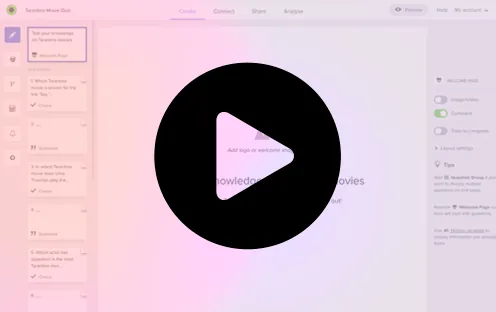
In the realm of data-driven research and opinion polling, few names carry as much weight and credibility as Gallup. With a history of over eight decades, Gallup has emerged as a global leader in gathering and analyzing public opinion, offering a unique lens into the collective consciousness of societies worldwide. The Gallup Survey has become a cornerstone in understanding the dynamic landscapes of politics, economics, social issues, and beyond.
As our world rapidly evolves, the need for reliable and timely data to inform decision-making has become more crucial than ever. Gallup’s surveys provide a comprehensive and nuanced understanding of public sentiment, shedding light on the shifting tides of societal attitudes, beliefs, and behaviors. By delving deep into the minds of individuals across a broad range of topics, the Gallup Survey not only unveils valuable insights but also uncovers the underlying trends that shape our present and future.
Understanding the Gallup Survey
The Gallup Survey is not just another poll; it is a robust methodology designed to capture the pulse of public opinion and provide valuable insights into the mindset of individuals and societies. To truly appreciate the significance of the Gallup Survey, it is essential to delve into its methodology, sampling techniques, and the factors contributing to its reputation as a trusted data source.
The Gallup Survey, renowned for its rigorous methodology and comprehensive approach, holds significant value in both customer experience (CX) and employee experience (EX) domains.
Leveraging Gallup Survey for Customer Experience Surveys
The Gallup Survey provides a robust foundation for measuring and understanding customer experience. Organizations can adapt the Gallup Survey methodology to design their CX surveys by incorporating key elements such as:
- Sample Selection: Utilize Gallup’s random sampling technique to ensure a representative sample of customers, reflecting the diversity of the target audience.
- Survey Questions: Draw inspiration from Gallup’s approach to question design, focusing on clarity, neutrality, and including Likert scales and open-ended questions. Tailor the questions to capture specific aspects of CX that align with organizational objectives.
- Analysis and Insights: Apply Gallup’s data analysis techniques to identify patterns, trends, and correlations within the customer data. Leverage subgroup analyses to uncover variations in CX based on demographics or other relevant factors.
- Longitudinal Tracking: Employ the longitudinal approach of the Gallup Survey to track changes in CX over time, identifying areas of improvement or emerging trends that impact customer satisfaction and loyalty.
Utilizing Gallup Survey for Employee Experience Surveys
Gallup’s Employee Engagement Survey also serves as a valuable framework for measuring and enhancing employee experience. Organizations can adapt Gallup’s methodology to conduct EX surveys, focusing on the following aspects:
- Employee Selection: Implement Gallup’s random sampling technique or survey the entire employee population to ensure a representative sample. Consider variations in demographics and job roles to capture diverse perspectives.
- Survey Questions: Craft survey questions that align with Gallup’s approach to neutrality, clarity, and inclusiveness. Cover key aspects of EX such as job satisfaction, organizational culture, communication, leadership, training opportunities, and career development.
- Gallup Q12: Consider incorporating Gallup’s renowned Q12 questionnaire, a set of 12 validated questions that measure employee engagement. The Q12 provides a standardized approach to assess the key drivers of employee engagement and performance.
- Action Planning: Leverage Gallup’s approach to data analysis and insights to identify areas of strength and improvement in EX. Use the findings to develop action plans and initiatives that address employee concerns, enhance engagement, and improve overall EX.
The Gallup Survey framework offers valuable insights and methodologies that organizations can leverage to enhance their understanding of customer experience and employee experience. By adapting Gallup’s robust methodology, organizations can design and conduct surveys that capture essential data, analyze the findings effectively, and take targeted actions to improve CX and EX.
Key Results and Insights
With its comprehensive methodology and insightful survey questions, the Gallup Survey uncovers key results and provides invaluable insights into both employee experience (EX) and customer experience (CX).
- Employee Engagement and CX Excellence:
Gallup’s research consistently indicates that employee engagement is a significant driver of CX excellence. Engaged employees demonstrate a higher level of commitment to delivering exceptional service and creating positive customer interactions. Gallup’s findings suggest that organizations with a culture that nurtures employee engagement, provides clear expectations, recognizes and rewards achievements, and fosters professional growth, are more likely to achieve superior CX performance. - Customer Feedback and Employee Empowerment:
The Gallup Survey emphasizes the significance of empowering employees through customer feedback. Organizations that actively seek and utilize customer feedback, and empower employees to act upon it, achieve higher levels of CX success. Gallup’s research reveals that when employees are equipped with the autonomy, resources, and authority to address customer needs and concerns, they can deliver personalized and effective solutions, leading to increased customer satisfaction and loyalty. - Continuous Improvement and CX Enhancement:
The Gallup Survey underscores the significance of continuous improvement efforts in enhancing CX. Organizations that prioritize ongoing learning, innovation, and customer-centricity tend to deliver superior customer experiences. Gallup’s insights reveal that organizations that actively seek feedback, monitor CX performance, and invest in employee development to enhance their skills and capabilities can stay ahead in meeting evolving customer expectations and driving sustainable business growth.
The key results and insights from the Gallup Survey illuminate the critical interplay between employee experience (EX) and customer experience (CX). The findings emphasize that engaged employees, emotional connections, empowerment, values alignment, and continuous improvement initiatives are crucial factors for achieving exceptional CX performance and customer loyalty. By leveraging these insights, organizations can develop strategies prioritizing EX and enhancing CX, leading to a competitive edge, increased customer satisfaction, and long-term success.







